Varicose veins from the lower leg are the result of an inactive lifestyle (in more than 75% of cases) that exist in most modern professions.To stop the first signs of the disease, it is sufficient to change your diet and improve physical activity.Varicose veins in the feet are full of trophic ulcer appearance.Therefore, it is inappropriate and unsafe to start a health condition.
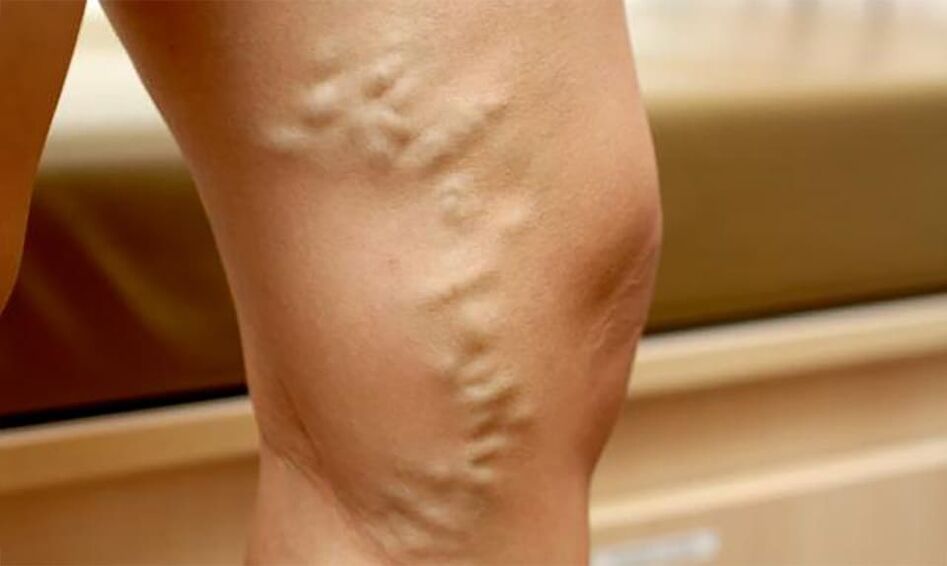
What is varicose veins?
The disease is directly related to venous blood flow.The more often the blood does not change in the veins, the higher the probability of expanding their walls.Healthy organisms contribute to full blood circulation (in addition to heart activity) with regular reduction of muscle fibers.Thanks to muscle function:
- Systematic pressure increases and decreases in vessels
- The vein valve works in harmony: they open and close the heart rhythm
- Blood has no time to stagnate, its circulation speed allows you to pump full veins
If the artery blood flow is facilitated by the power of attraction, then for the implementation of the vein, the body makes additional effort, pushing blood from the heart to the liver.Incomplete vein valve closure is the cause of blood circulation instability.The staging of blood between the valves causes greater development of veins.This condition is called varicose veins.
Symptom
If you do not pay attention to the first signs of pathology, there is a high risk of higher development in a worse level.The result is potentially frustrating - until death begins.Therefore, do not delay prevention and therapy, when the following symptoms appear:
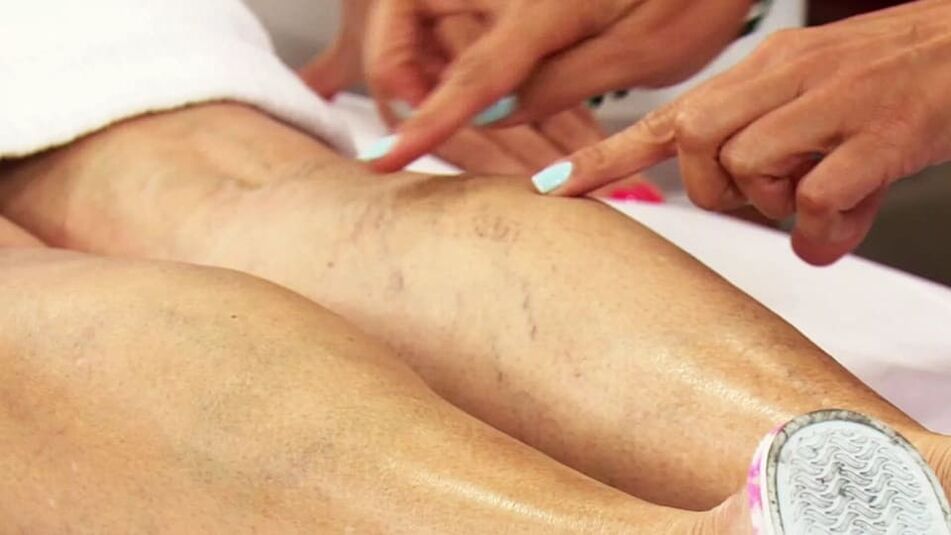
- Lower limb pain constraints, increased fatigue is observed.
- Dark shade veins (chaos or redness) bulging on the surface of the skin.
- Swelling of the feet (with damage to the surface and inner veins), sometimes seizures as possible.
- Places of pigment on the skin of the ankle, feet.
The neglected level is characterized by the formation of ulcers.Their localization is primarily an area of joints.The above signs show the pathogenesis of varicose veins.
Stage I and II
They are caused by the presence of pain, night seizures in the feet, severity.But diagnostic information does not indicate the presence of the disease.The vascular mesh, the nodules or the "stars" show themselves.The enlarged vein can be seen and feels.After a sharp load on the feet or long stay in the sitting position, the ship increases in volume.
Stages III and IV
They are characterized by systematic foot swelling, especially in the evening, when the body succeeds in a day.In the morning, symptoms are reduced due to night rest.Here are the leaders of the trophic ulcer:
- Improper skin tone, dark (up to black) -due to excessive pigment accumulation.
- Inflammation of the epithelial tissue of various intensity - from small redness to extensive exhaust.
- The atropic process of the epidermis, involves the holes of light on the scalp.
Trophic ulcer occurs due to lack of nutrients in the lower leg.In the last 4 stages of the ulcer, it acquired a chronic character and did not recover for a long time.
Varicose vein stage

Naif patients believe that if varicose veins are visually indicated, there is nothing to worry about.Diagnosis can indicate the presence of the disease even with minimal symptoms - severity, periodicity, unpleasant sensations in the foot.It needs to be carefully treating your own sensation, especially with seizures or pain in the calf.Presidential medicines, therapeutic procedures increase the vein patency in the foot, the condition of the cardiovascular system of the whole organism.
Predominant
It has a free form of pathogenesis.It is determined by the genetic tendency of the congenital anomalous background of connective tissue, the vascular wall.The disturbed blood circulation in such patients is natural.Factors that provoke the main varicose veins are:
- Overweight body weight
- Pregnancy where the load on the ship increases
- Nososa or long socks with tight elastic strips
- Daily activities that suggest long accommodation in standing position
If the vein wall is weak from the birth, any of the above conditions cause blood flow instability and pathological development.
Secondary
Reproductive and middle -aged women are subject to development.Secondary varicose veins are a result of inactive lifestyle, hormone disruption, pregnancy, excessive pressure on the feet.Pathology arises as a complication of transmitted diseases from infectious or oncology genesis.The etiology of the disease includes traumatic vascular damage.Degenerative changes lead to the following phenomena:
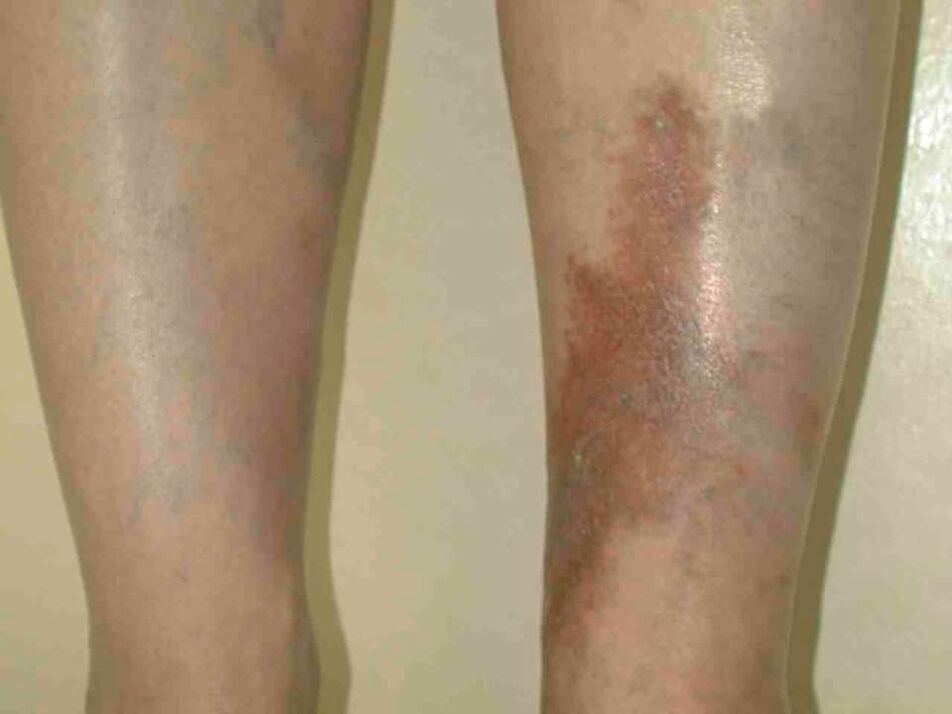
- damage to the integrity of the vein valve
- The deterioration of the vascular wall muscle tone
- Limited tissue nutrition, lack of oxygen enrichment
- A violation of blood flow by pathways
- increased venous pressure
- The appearance of trophic ulcer is the result of late therapy
During tumor treatment, infectious diseases of all forms of pathogen, should monitor the condition of the foot.It is recommended to perform varicose veins, and timely examination.It is advisable to be in a lack of time.Pelvic and hip veins are squeezed, which negatively affects their tone.
Cause
The main factor in the etiological varicose veins is genetic.Also, it doesn't matter where the body of the disease is localized in the brothers.If the genus exists in the gene that carries information on the weakness of the blood vessels, it will soon appear if it contributes to this:
- An inactive lifestyle, long -term labor activity in a sitting or standing position
- Excessive pressure on the legs associated with lifting or moving heavy
- Alcohol abuse, smoking, drugs
- Lack of desire for physical training
- Wearing high long shoes
If the pathology is diagnosed, it is necessary to start treatment as soon as possible.
Valuity of the valve tool

According to many clinical studies, the etiopatogenetic mechanism leading to varicose veins with unknown valve deficiency.However, it is known that with improper operation, the valve does not completely overlap with the lumen of the vessel, which causes blood flow and stagnation.This leads to the violation:
- stretch the vein wall
- reduction of elasticity and ability to restore forms
- Strengthening blood stagnation
As a result, disturbing symptoms in the form of edema, pain, and trophic disorders are indicated.Ve -valve work is influenced by genetic and epigenetic factors: heredity, pregnancy, weight, physical activity, restructuring of the body hormone.
Pregnancy
During pregnancy, women are at risk for the development of varicose veins.This is due to both hormone changes and increased load on the internal organs, lower limbs.With each subsequent pregnancy, the risk of increased vascular infarction increases.In this case, varicose veins can affect not only lower limbs, but also small pelvis, labia, uterus.
Climax
During menopause, there is a restructuring of the hormone background, which can lead to increased risk of varicose veins.Varicose veins can affect not only the feet, but also the pelvic organs, which is why infringement is often confused with inflammation: cystitis, endometriosis.Varicose veins arise due to a decrease in the elasticity of the venous wall, resulting in reverse blood through the vessel.
Prostate adenoma
Prostate adenoma is a pathological condition accompanied by prostate tissue and urinary tract disorders.With adenoma, complaints arise about:
- Boast of urine
- A weakened flow of urine
- Voluntary urine allocation, in particular, at night
After emptying the bladder, there is no relief, discomfort, mental stress.With complete delays in the urine, the inflammation process can develop, the risk of stone formation increases.In severe cases, intoxication and kidney failure occur.The absence of high therapy -the quality of prostate adenoma is full of complications, one of which is varicose veins.
Hormone contraceptive acceptance
Hormone contraceptive acceptance is associated with high risk of vascular complications: varicose veins, thrombosis.Such a group of drugs causes the effects of depending on the dose: an excessive risk of estrogen is equated with an increase in the probability of thrombosis.With hereditary tendencies to varicose veins, it is recommended to refrain from using hormone methods and consider the possibility of using other contraceptive and safer methods.
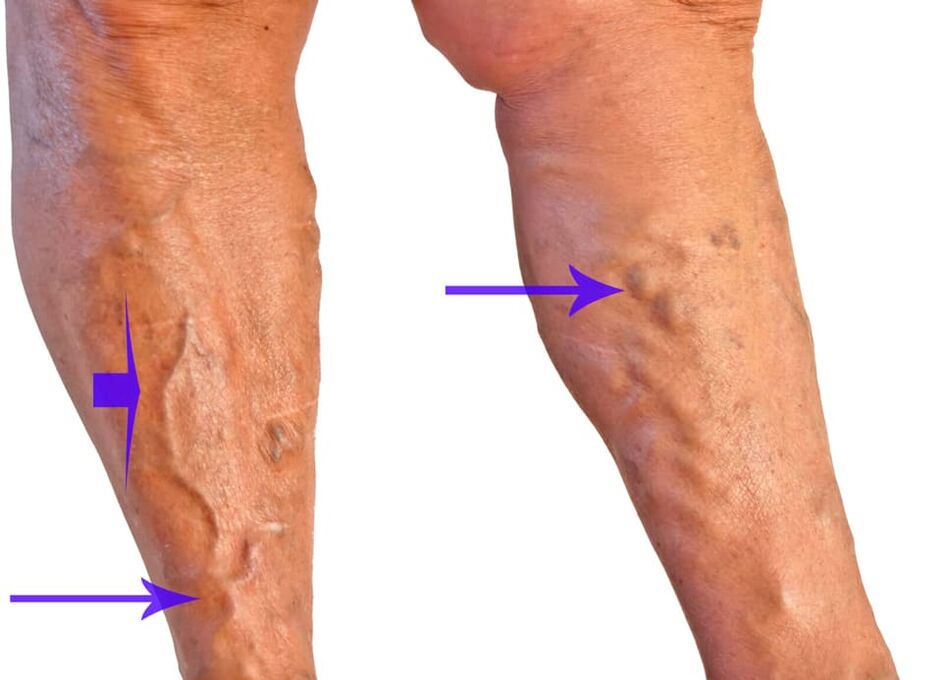
Descendants
The tendency of heredity is one of the major factors that leads to the development of varicose veins.In people with such risk factors, the formation of fine vascular mesh is observed.In the first signs of infringement, it is important to direct efforts to prevent further development of the disease: use compression knitwear, routine -based preparations and diosmine, give priority to moderate physical appearance, observe drinking mode, and make yoga.
Insufficient physical activity
Hypodynamic lifestyle often leads to the development of varicose veins.The care of physical energy selection appropriate to existing varicose veins must be consulted in advance with phlebologists.The unclear benefits are taken to the roads daily in the fresh air at a comfortable rate: at least 10,000 steps a day.The vein system likes mobile sports.Special benefits to swimming, running, biking, scandinavian walk.It is recommended to exclude the implementation of exercises that can trigger traumatic wounds from the lower leg.
Overweight
Excessive weight loss is a risk factor that increases the tendency for varicose veins.This condition is aggravated when other diseases, hormone changes, bad habits.People with varicose veins are not recommended to adhere to severe diets and mono diets, so weight loss processes should be as soft and natural as possible.When the patient directs the effort to normalize weight, it automatically slows down the development of varicose veins.
In the early stages of varicose veins, the flow of venous blood slows down under the influence of hereditary and predisposing factors.Excess weight only worsens this condition.Pathological changes in valves and blood vessels lead to activation of special mechanisms - "rolling leukocytes".This leads to the accumulation of leukocytes in the endothelium layer and the development of inflammatory reactions.The pathological process gradually extends throughout the vessel vessels, causing thinning and stretching of the vein wall, as well as the valve deformation.
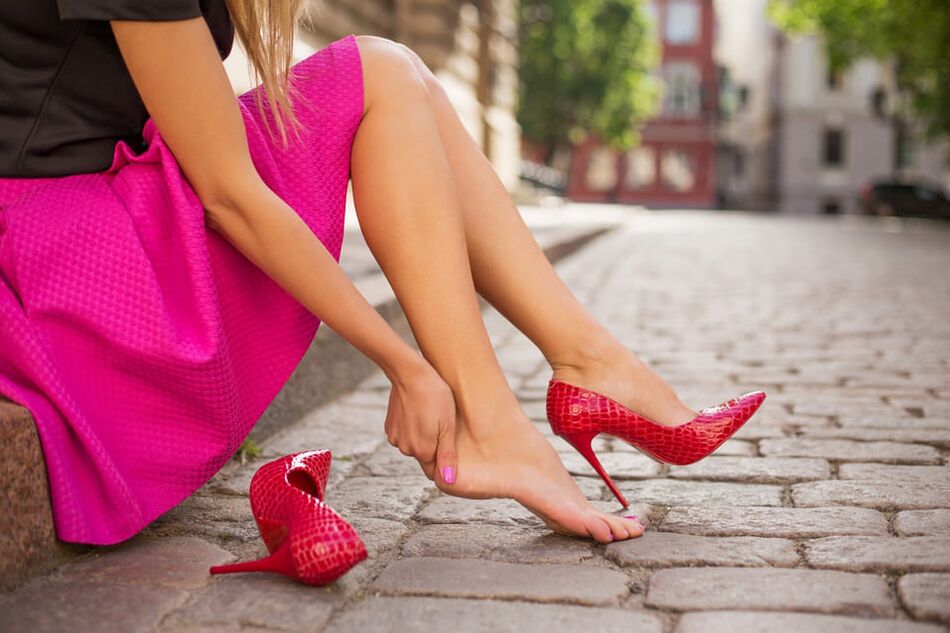
An unhealthy lifestyle
People who do not adhere to the basic principles of a healthy lifestyle often face varicose veins.This condition is complicated with a non -moving or inactive lifestyle, lack of nutrients, smoking, drinking alcohol, long static loads of standing or sitting.Therefore, in order to avoid further development of varicose veins, it is necessary to direct efforts to correct lifestyle: reviewing your daily diet, normalizing weight, eliminating bad habits.
Leg injuries
The traumatic lesions of the feet are often complicated by varicose veins.Various damage can affect the condition of the valve and veins: soft tissue bruises, damage to the joints, violations of bone integrity.Any muscle injury, joints and bones lead to edema, violations of blood flow in the superficial and deep veins.
Movement can be triggered even by minor injuries that require compliance with bed break.Bone fractures are associated with high risk of thrombosis.Medical statistics confirm that the risk of developing varicose veins in people with foot injuries is several times higher than others.If you are injured, first of all, the effort is directed for the treatment.In the future, medicines are selected to ensure optimal blood flow and prevent blood vessels.It is advisable to wear compression knitwear selected by phlebologists.
The possibility of complications
In addition to difficulty in movement, pain, varicose veins pose a threat to blood clotting.They came, causing death.Due to the torn blood circulation, not only the limb vessels, but also the pulmonary artery can have blood flow.At the same time, thromboembolism is diagnosed by relieving blood supply to the lungs.Often the result of varicose veins is:
- phlebitis
- stagnan dermatitis
- A chronic vein deficiency
- Restless leg syndrome

Septic thrombophlebitis occurs due to the decomposition of frozen blood in the blood plasma.Aseptic phlebitis is a potential for injection complications in Vienna special material to blame their lumen (sclerosis).
Diagnostics
Doppler studies are a standard diagnostic method for varicose veins.It is often used for the main suspicion of pathology without clear external signs, giving a clear idea of its presence or absence.UZDS - ultrasound duplex scanning, referring to professional research methods.Combining the possibility of ultrasound and dopplerography, UZD may indicate:
- Vienna's cross size
- Speed of movement, direction and intensity of blood circulation (color encoding images are displayed on medical equipment monitors)
- Valve state, vein wall (thanks to the topography of the ship)
- Specific localization of expansion
- presence of blood clots, other obstacles for full blood circulation
Duplexic diagnostics - "gold standard" are among other methods for studying varicose veins in the feet.These include: Oklusive platyismography, phleboscintography radionuclide, reflective rheography, photopletsmography, CT, X -Ray contact phlebography, direct phlebotonometry.With their help, the possibility of surgical intervention was lowered.The procedure helps to identify the quantity and location of blood clots, pressure in the veins, characteristics of blood flow disorders.
Treatment
In the early stages of the development of the disease, local use - creams, ointment helps.Such therapy is easy for home use.Only a few uses can reduce the symptoms of surface vein development by 43% in 10-14 days daily.Another way to strengthen the elasticity of the veins is a contrast bath or a shower.Under the influence of temperature differences, vessels grow and narrow, thus increasing their tone.For the prevention and therapy of varicose veins, they also use:
- The use of chamomile and mint stew, alcohol tincture on white acacia flowers.
- Wrap with a horse chestnut tincture.
- Wrap to the affected area of apple vinegar, which contains many elements of the trace, vitamins.
- Compress with white, blue or green clay, which is available at the pharmacy.The frequency of the recommended procedure is twice a week.
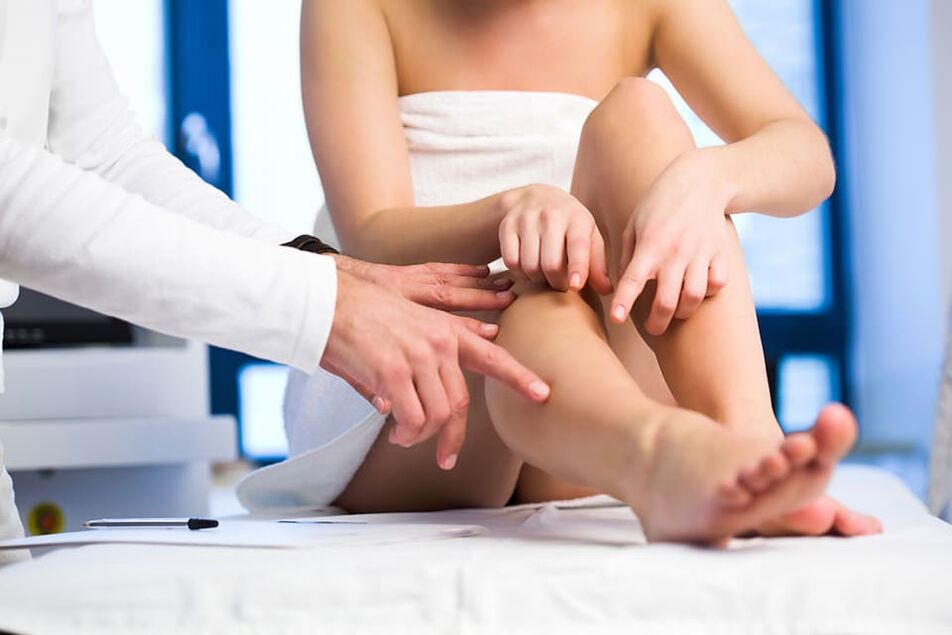
Traditional medicine recipes complement the prescribed drug treatment.But the following methods can only be used after the approval of the phlebologist.The purpose of therapy is to restore integrity and vein performance.There are 2 ways to achieve it: to seize (glue) or cut the blood vessels.
Laser treatment
This technique is based on the use of the thermal properties of laser radiation.Light -Breeder, introduced under local anesthesia to Vienna, increases blood hemoglobin temperature, as a result the vessel wall is "sealed" from the inside.The flow of blood is distributed to deeper veins.The resulting radiation is indicated, so it does not cause harm to the surrounding fabric.
After a while, new cells formed are absorbed.After the procedure, it is recommended to use a specialized knitwear type.It is important to refrain from excessive physical work and wear heels.Thanks to laser freezing, it is possible to overcome varicose veins in a painless, slightly invasive way.
Sclerotherapy
It is prescribed in the early stages of the disease with a slight development of veins.Allows to regulate small vessels from "grid" or "stars".This procedure is a standard injection without relieving pain, the average manipulation period is 7-14 minutes.Sclerosing materials perform adhesive functions with subsequent resorptions of this new connecting structure.As a result, varicose veins stop in 10-14 days.Symptoms of symptoms require re -conducting sclerotherapy in incredible cases.
Stockings and tight
Compression underwear is classified by length: golf (to knee), socks (to thighs), tight (to the waist).They are recommended to patients during physical activity (including simulators or in the fitness room).Compression linen is indicated for long movement or, rather, with long accommodation in a sitting position.Medical knitwear contributes to blood circulation during difficult times for blood vessels.

Strict benefits are priceless: they compress the veins, increase blood flow.The specificity of their production is based on the main function - to help blood move from the bottom to the heart.Therefore, in the area of the ankle, and higher - become more free.The same purpose in elastic bandage contributes to the removal of swelling, discomfort.But knitwear is easier, comfortable in the process of wearing, removal, operation.The power of the tension is installed by the manufacturer, and the probability of sliding on the skin is minimal.
Surgical intervention
It is prescribed at an extreme level of pathology, when the whole therapeutic method is ineffective.The most common operation is phlebectomy (large vessel resection).Also held:
- Surgical intervention on the focus of the Southern Saffer and Fenome Saffer
- Amputation of large subcutaneous veins
- Intravavasal plastic in the vessel in
Many think about the uncertainty of the removal of veins if they do not interfere with life.However, surgeons have their arguments on this subject: to stop the dangers of blood clot formation - first.The main role is played by the professionalism of the surgeon.
Recovery after surgery
Includes standard suggestions for lymphovenosis failure:
- Activation of mobility according to the norms allowed by the doctor.Start you at least sometimes to knead your feet, then switch to physiotherapy training.
- Wear an elastic linen of compression class 1-2.Alternative - wrapping with the imposition of visits.
- Use of venotonic drugs: All types of ointments include and not only.In severe conditions of the patient, local treatment with heparin containing ointment, antibacterial medicine, and hormone is prescribed.Their purpose is to reduce swelling, symptoms of dermatosis, dermatoliposclerosis;Increase the circulation of micro -soft tissue.
- Physiotherapy: Lymphatic drainage massage (if there are no complications, for example, lymphora, and cured wounds), magnetotherapy (up to 8 procedures for the entire recovery period).
- Hematoma release, pain, inflammation through the use of polyferment drugs, with pentoxyphillin content, antiplatelet.
With the approach responsible for the steps above, the recovery period should not exceed 3 weeks, maximum - a month.This procedure minimizes the risk of blood clotting, reducing the recovery period.Contributes to the rapid recovery of blood circulation, the ability to work.Immediately after surgery, the location of the foot in a slightly raised state contributes to better blood circulation.Steps can only be taken for 2 days, exclusively with support for compression knitwear to prevent relapse.During the postoperative period, it is strictly prohibited:
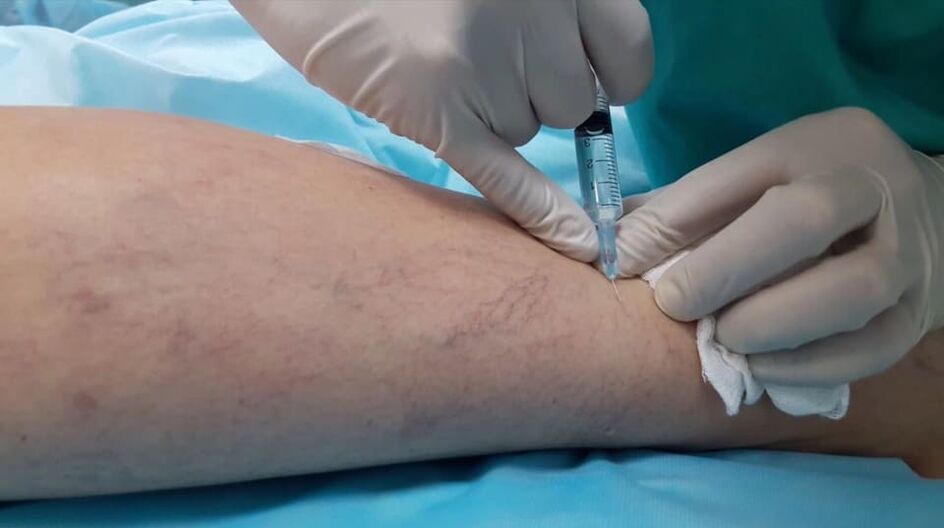
- Hot baths or baths
- lifting severity, subdivide the body with excessive load
- Use hard cloth and body care (hygiene procedures must be carried out only with warm water)
- Remove the crust from the scarring wound space
- Subject to controlled soft tissue infections (for the prevention of complications, local antiseptic agents are used)
- breached a designated diet and a quiet lifestyle
Diet is needed to include fresh vegetables, fruits, as well as "alkaline" vegetables.Cook all the dishes using purified water.Salt is better to replace the sea - it does not contain external impurities that scratch the vessel from the inside.
Prevention
To prevent varicose veins in the feet, it is sufficient to observe the main condition - daily but simple physical activity is required.Even patients with congenital venous wall defects can prevent disease if the following suggestions follow:
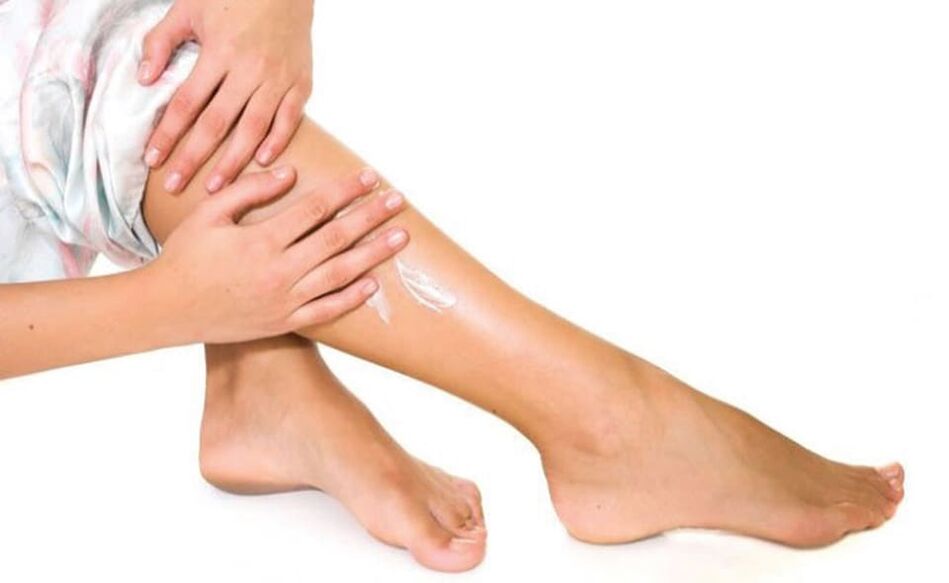
- Handling leg electromyostimulation is a simple but useful procedure available to everyone to use at home.It is enough to buy neuromuscular stimulants at the pharmacy and use it according to the instructions.
- During a long flight or travel, the feet should be sorted - freely, with the help of pinching, stinging light, rubbing.Massage will eliminate the stagnant phenomenon on the lower leg.
- Do not be involved in wearing nearby model shoes: heel height is proportional to the risk of varicose veins.
- Cold water hardening is an effective way to soothe the cardiovascular system.
After a long stay in the sitting position, you need to walk or roll in the stand from the foot to the heel.Listed suggestions are useful for people with office types, help minimize the risk of varicose veins for drivers and sellers.


















